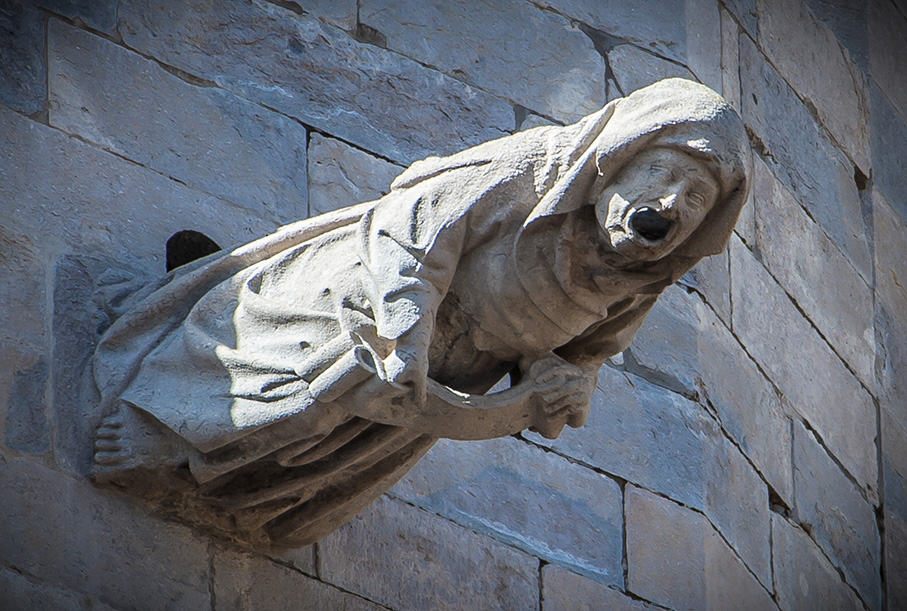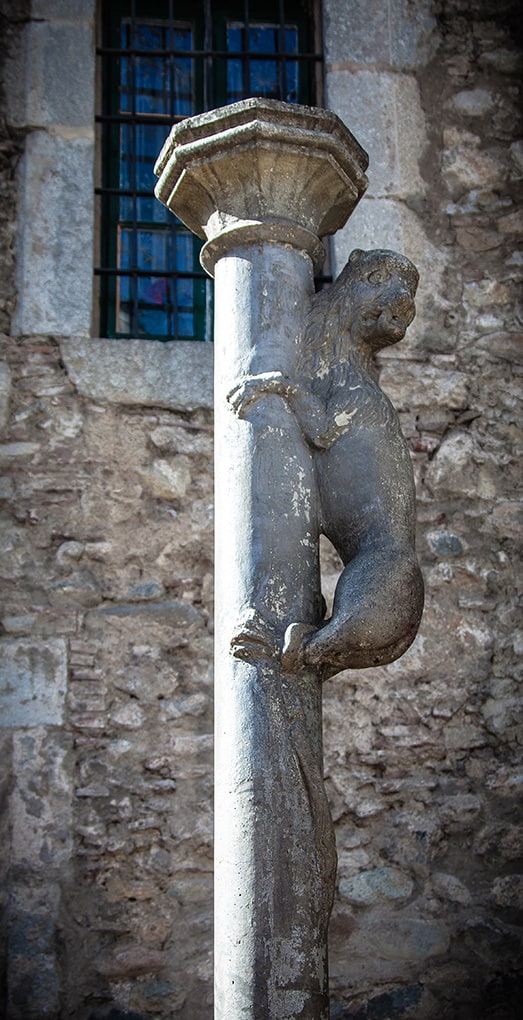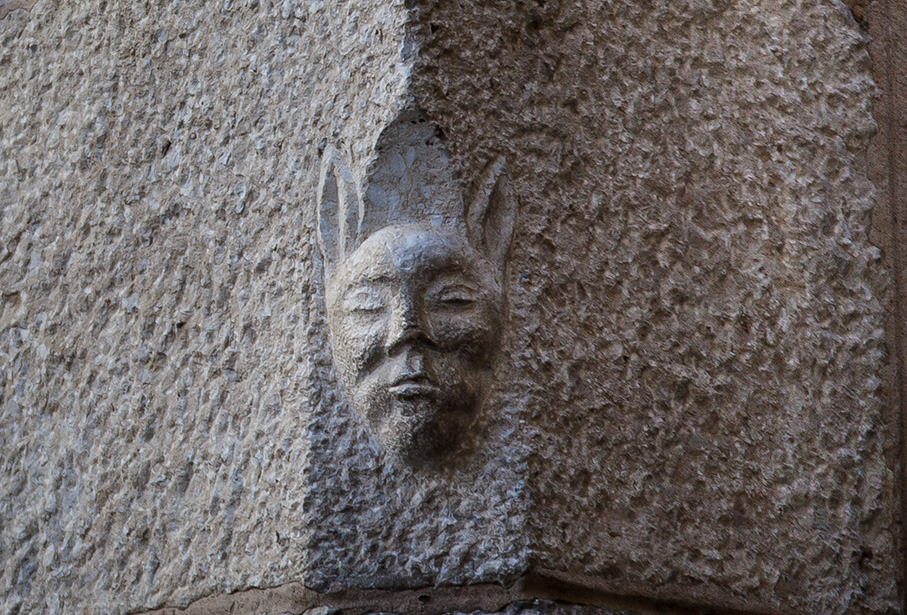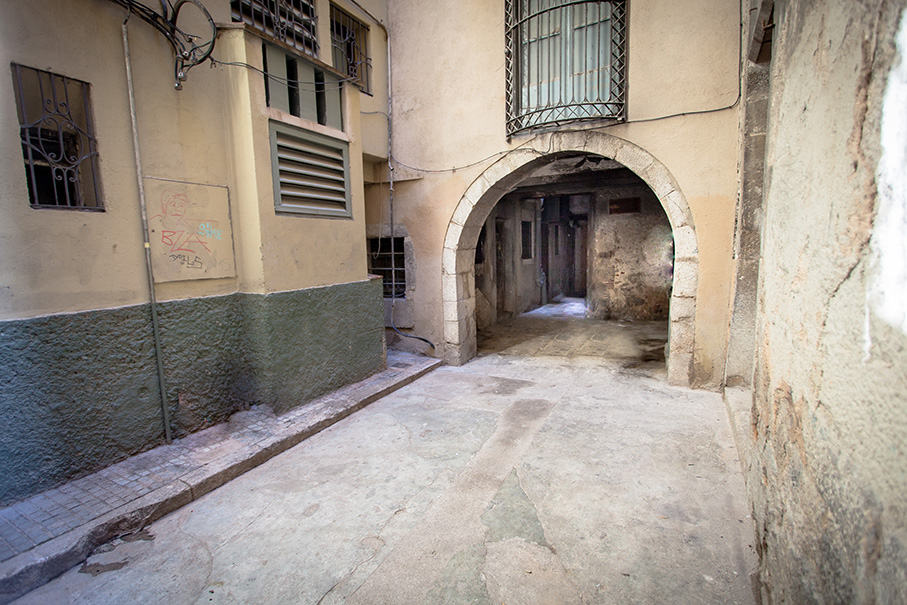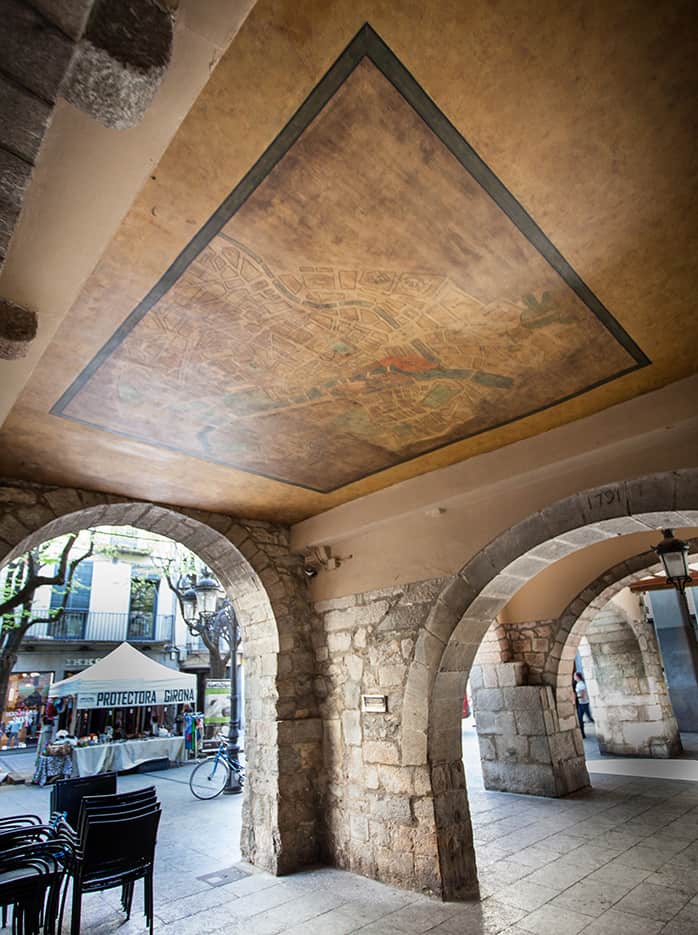The city of the four rivers has always preserved a breath of mystery both by the presence of a thick fog during the nights and dawns of wet autumn and by the elongated shade of the imposing cathedral on the houses and roofs. Here you have some of the legends and curiosities that can entertain both the occasional visitor and the local who has a bit of time to devote to it.
The Mysterious Girona
8 mysteries to see
1. The Cathedral Witch:
It is a gargoyle placed in the cathedral next to the Carlemany tower. Although it is true that all over the world gargoyles tend to represent plants or monster motives, this one is exceptional because it represents a feminine figure with her head covered by a cornet and a parchment roll in her hands.
The story tells us that she was a witch who used to throw stones to the priests and the canons who passed by in the Corpus procession. But one day her misdeeds offended God and He punished her turning her into stone with the following curse: “Stones you throw, strones you will throw and stone you will become”. To look at this sculpture or to take a good picture the best place is from the “Jardins de la Francesa”, behind the cathedral apse.
2. A 17th Century Dalí:
If the visitors climbs up the 99 cathedral steps, stops in front of the main door and gazes at the baroque sculptures that decorate it, he will probably get a fright in seeing at the top left side Salvador Dali’s bust looking with his characteristic sight and his long moustache. However, the sculpture is from the 17th century! Was the sculpture a visionary? Mystery…
3. The Lioness
At the end of the Calderers street you will find the most representative symbol of the city: the lioness on the top of a stone column.
It is a very consolidated ritual that the first thing to be done in the city is to climb the column and kiss the backside of the animal.
Following this requirement is a guarantee to be welcomed in the city and to come back again.
4. Biting one’s tongue:
Maybe the only interesting detail about the council building (Plaça del vi) is the figure that decorates the top side of the access door to the Chamber. It is a sculpture dating from the year 1605 which represents a man in attitude of biting his tongue. It is an image full of symbolism which reminds the aldermen that often it is necessary biting one’s tongue before saying certain nonsense and/or insults when public debates are taking place.
5. “Banyeta”(little horns)
Also in the Plaça del Vi and in its corner with Ciutadans street there is sculpted in the stone a curious and enigmatic image. It is a figure with horns that according to some versions it suggested that prostitutes worked there (in Spanish and Catalan when somebody is unfaithful to his/her mate it is said that the innocent part wears horns).
However, in this case the explanation doesn’t seem very likely since in this place there used to be the Generalitat seat and before that the Customs Administration. Maybe the best hypothesis could be that the face represented Baphomet, an idol demon-like which was worshiped by the Templar Order that formerly had had their centre here.
6. The “Plaça dels Raïms”
It is placed behind the Rambla and has access from Cort Reial, in the very center of medieval Girona. It is not easy to find anyone walking around, it is usually peaceful and lonely. Although it appears in the Record Guinness book many locals are not aware of its existence. And there is something that makes it extremely peculiar: it is the smallest square in the world! Its name’s origin is due to the tradition to call the spots according to the activity which took place there, in this case the grapes market. It is a dark, closed space with only two communal stairways.
7. Paris map
What is the sense of having a map of Paris painted under the arches in the Rambla?
On March the 12th in 1985 when the workers were carrying out restoration works in the house number 42 they discovered some drawings that looked like a city map.
Once restored, a magnificent and detailed map of the City of Light was revealed. But there was no mystery at all.
Very soon it was found out that the painting was an advertising of a lingerie shop opened towards the end of the 19th Century commonly known as “The Parisien”.
If the visitor walks under the arches, when reaching the end of the Rambla it is convenient that he raises his head and he will have an unprecedented view of Paris.
8. Murderous monks
Without getting out from the arches of the Rambla de la Libertat, we find some tiny figures in relief pretending to be some capitals which could be unnoticed by the visitor or the passerby in general. They are some little stone sculptures from the 17th Century representing a snail man, a musician with a bagpipe and a man with bat wings. The three figures represent the three monks from Banyoles who were executed in 1622 for having killed their own abbot who condemned their amoral lifestyle.
